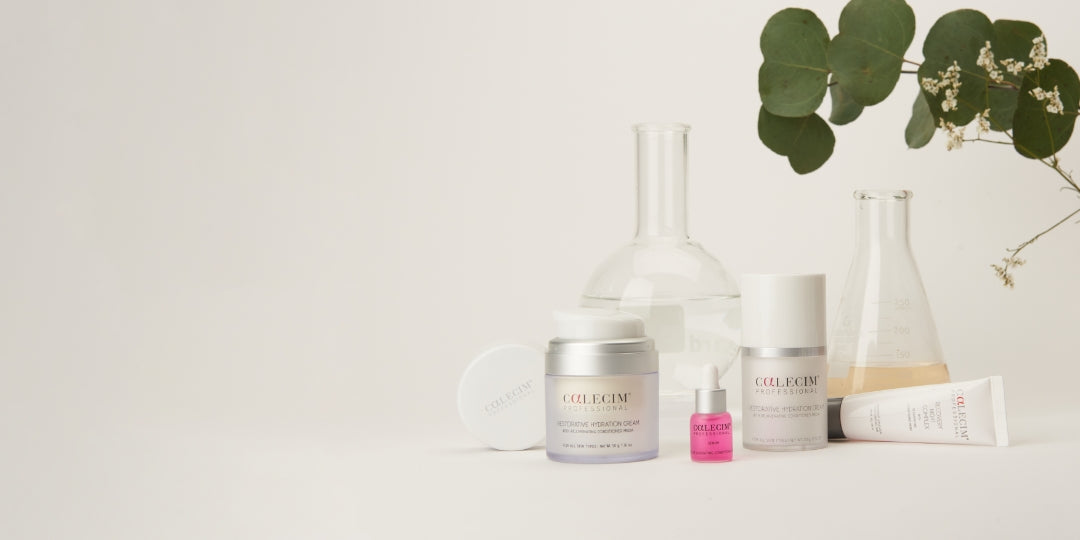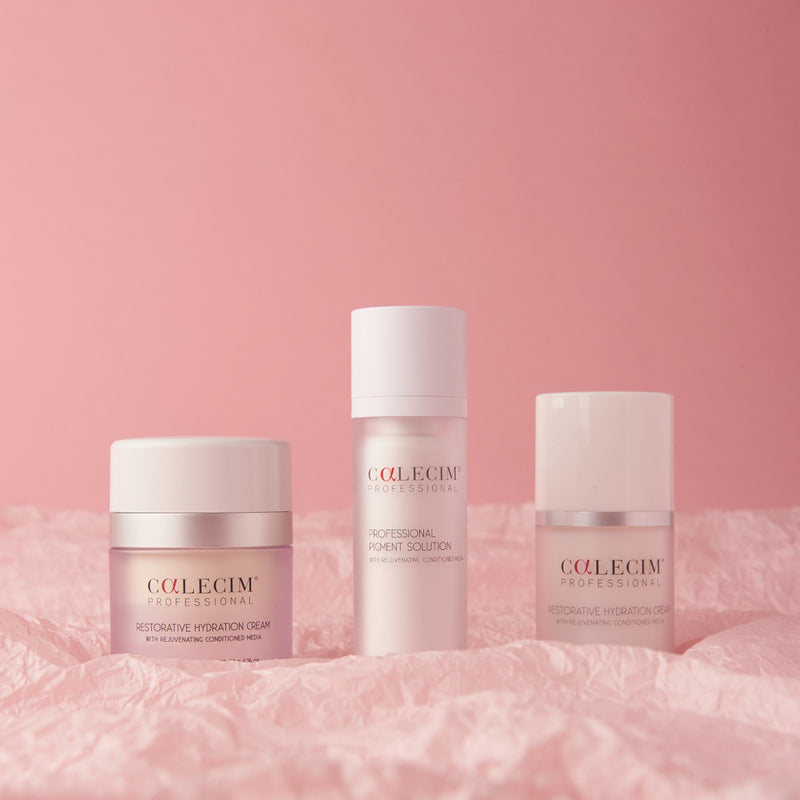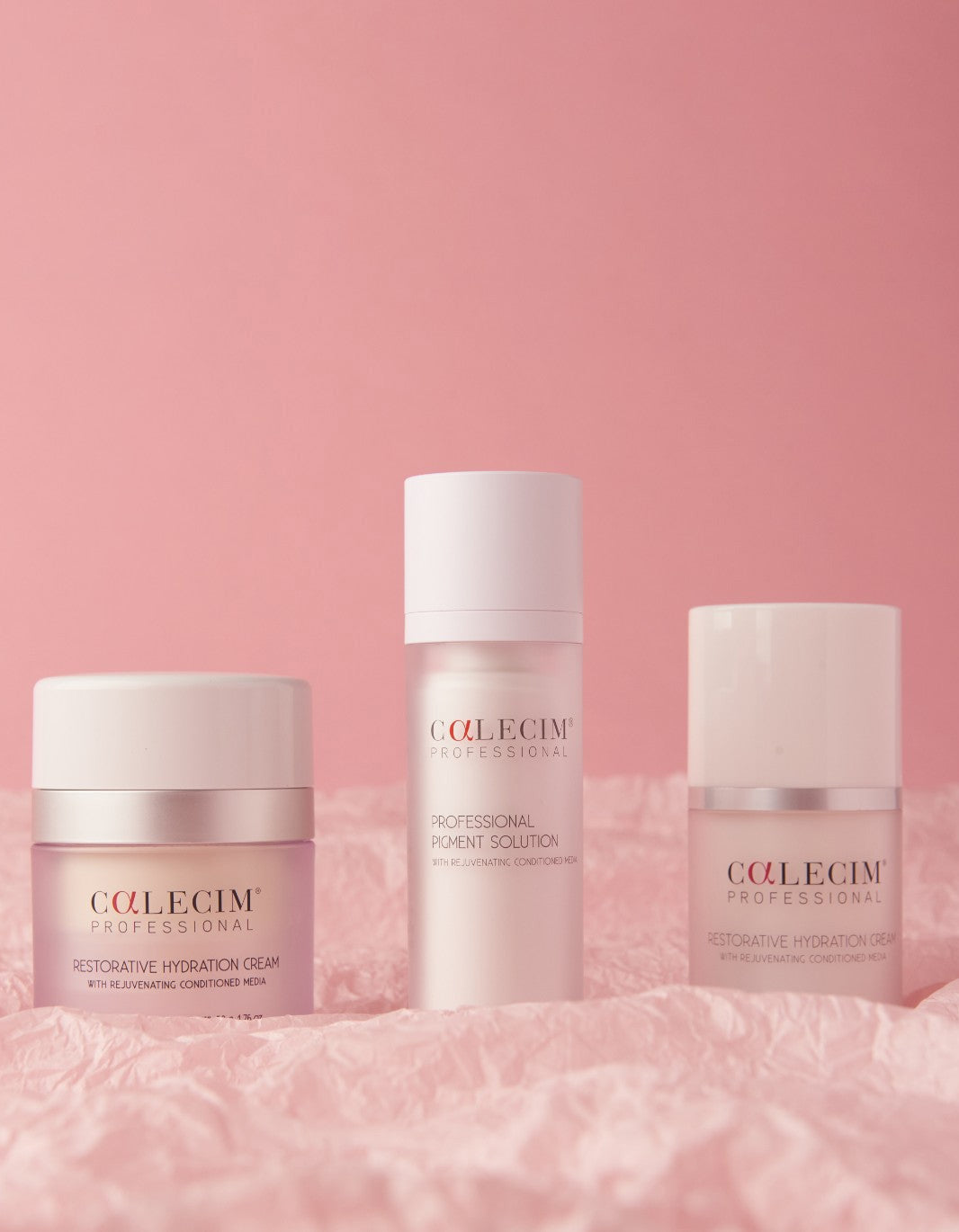2025 Forecast: Stem cell growth factors and exosomes
The future of skincare is here with this latest active ingredient that can transform how your skin behaves
The future of skincare is here with this latest active ingredient that can transform how your skin behaves
Developing ways to combat the appearance of lines and wrinkles, as well as reducing skin inflammation and hyperpigmentation, have long been a mainstay of skincare research. One ingredient that has got scientists and dermatologists excited in recent years is growth factors and the exosomes that hold them.
The science behind growth factors and exosomes
Growth factors are proteins secreted by all types of cells. In the skin, growth factors are produced by cells in the outermost epidermal layer and the deeper dermis. These cells encompass keratinocytes (the structural component of the epidermis), melanocytes (pigment-making cells) and fibroblasts (collagen factories). Growth factors are natural substances made by these skin cells that support the repair of damaged skin, as a result of aging or environmental factors. Among other attributes, they can activate the cells to make more collagen and elastin, which give skin its texture and shape. Exosomes are tiny sac-like structure that hold the growth factors and other proteins.
Explains cosmetic surgeon and board-certified dermatologist Dr Mitchel Goldman: “Our body contains lots of different cells which sit there until they are told to do something. This includes the cells in and under our skin which is called the dermis. This is where a cell called the fibroblast lives – this is the cell that makes collagen and elastic fibres. As these cells become older, they get tired and don’t know what to do anymore. So, by signaling them with growth factors, you literally turn them on, you get them excited, and they start making collagen and elastic fibres and other rejuvenating properties like hyaluronic acid and they stimulate epidermal cells to grow younger.”
What does growth factor skincare do
Cells in aging skin also produce fewer growth factors than those in youthful skin. One approach to support skin rejuvenation is to use products with a high concentration of stable growth factors. The most powerful growth factors are derived from stem cell cultures. The mix of these growth factors, proteins and cytokines secreted by stem cells can help restore the skin’s ability to rejuvenate.
Stem cells are found in all tissues. Says Dr Goldman, “They do the important work of controlling renewal and rejuvenation throughout the body including our skin. Stem cells do this in all parts of the body by secreting proteins to initiate and accelerate renewal and repair. These stem cell proteins work on skin cells that have been injured or damaged either by direct trauma or by harmful environmental elements like ultraviolet light and radiation.” As we get older the absolute number of stem cells in our bodies decreases and the quantity of proteins and growth factors they secrete also drops. Our skin becomes thinner and less supple, taking on a crepe-like appearance and pigmentation accumulates. As a result, skin starts to take on visible signs of aging.
When growth factors are applied to skin in high concentrations, it is able to penetrate the epidermis, and initiate a communication chain that leads to stimulation of dermal fibroblasts to produce collagen, thus helping to reduce the appearance of fine lines, wrinkles and improve skin tone and texture.
Best source of growth factors and exosomes in skincare
Growth factors and exosomes can be derived from several different human cells grown in a laboratory (skin cells, bone marrow stem cells, fat stem cells), extracted from one’s blood, or bioengineered from non-human sources (such as snails and some plants). They can also be artificially or synthetically reproduced in the lab. A number of skincare brands use growth factors and exosomes derived from plants. These may have limited effectiveness on human skin.
CALECIM® is a skincare brand that uses cord lining stem cells, which consist of both mesenchymal and epithelial stem cells. This source of stem cells was discovered in 2004 by CellResearchCorp – CALECIM®’s parent company, and has been recognized as the richest source of stem cells in the human body.
Through this technology, CALECIM® has access to an abundant, ethical source of stem cells that reliably produce growth factors. The stem cells are cultivated in culture media in the lab and are then removed from the media, leaving behind the cytokines, growth factors and other proteins they’ve secreted. This secretion is called PTT-6®; 1 ml of PTT-6® contains 3,000 active growth factors, proteins and cytokines, making it the most concentrated and powerful growth factor product in the market. PTT-6® is the key active ingredient in all CALECIM® Professional products.
PTT-6® works by sending protein messages to all layers of the skin. It helps improve collagen and elastin production and increases skin density, giving the net effect of skin tightening and lifting. The other effect of PTT-6® is shortened epidermal cell turnover time. When skin turnover is restored to 28 days, it encourages the regeneration of new skin cells and the shedding of old cells. The result of this is the appearance of more radiant and translucent skin as new skin cells can rise to the surface.
What we have described is how a powerful growth factor product should be reacting to your skin. They don’t just add ingredients to your skin; growth factors initiate a positive response so that your own skin is able to repair and renew itself efficiently like youthful skin. The future of skincare is here: stem cell growth factor technology that can transform the way your skin behaves and de-ages.




























.jpg?v=1757918076791)


